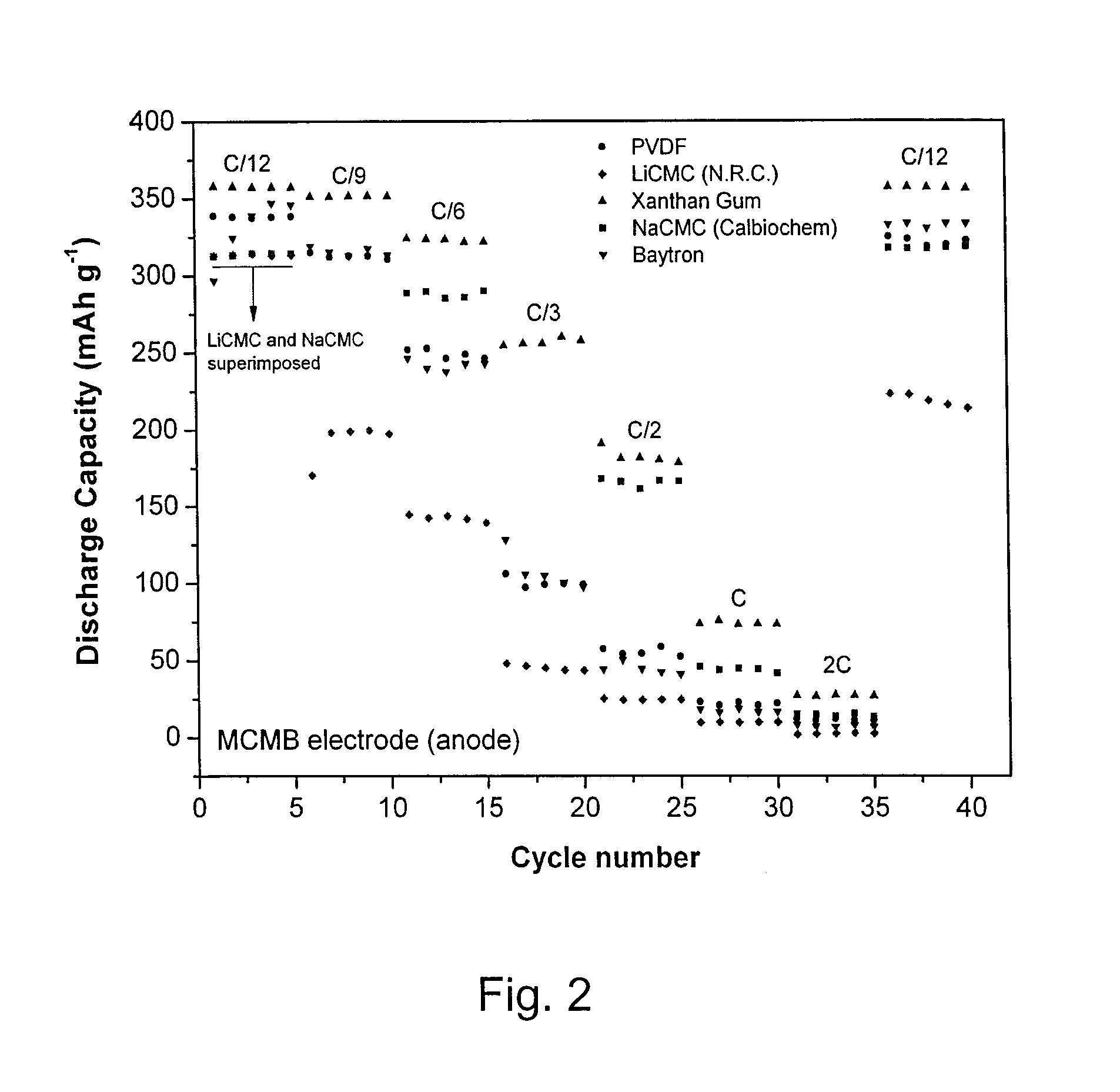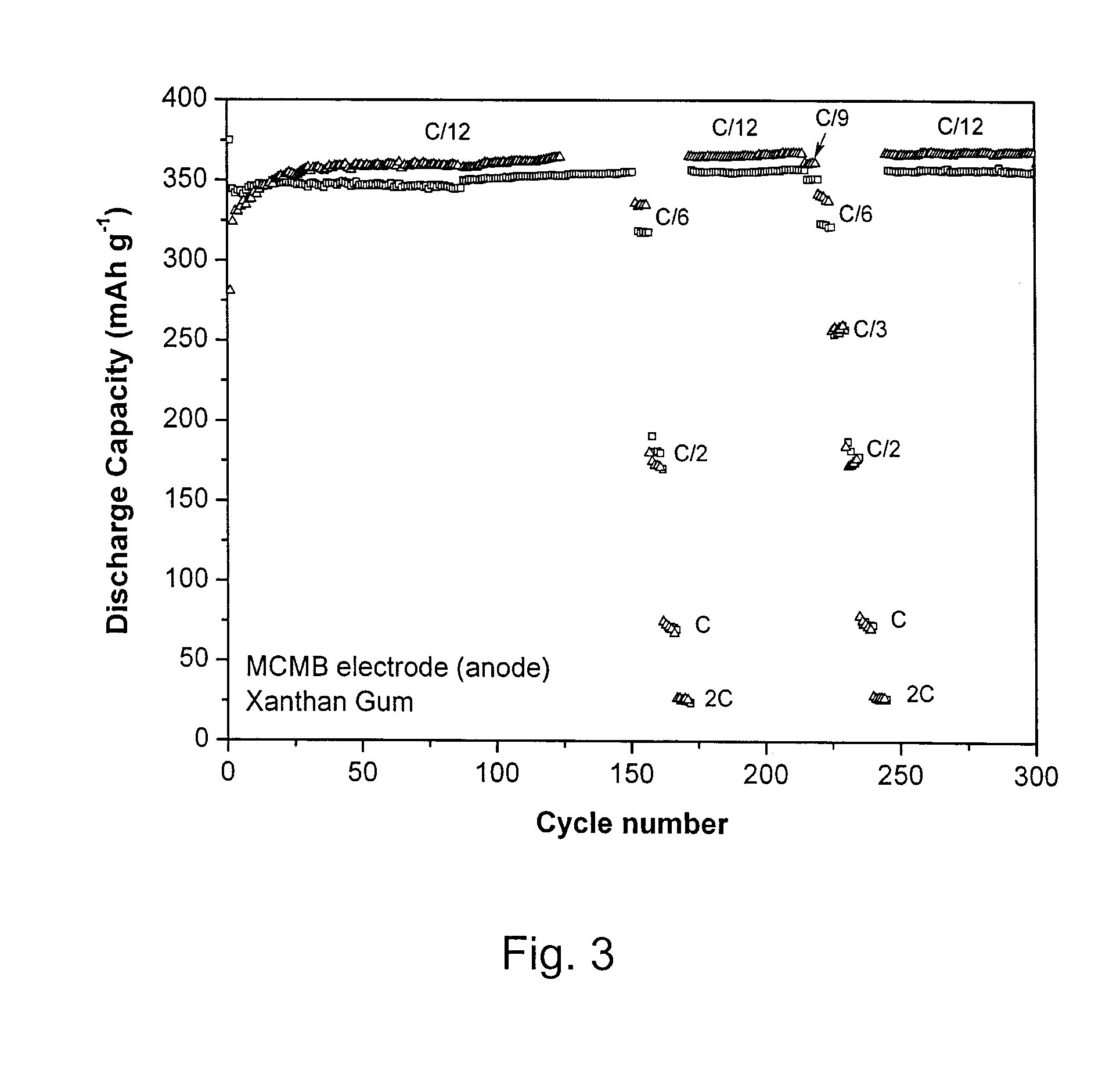Use of xanthan gum as an anode binder
a technology of anode binders and xanthan gum, which is applied in the field of electrochemical binders, can solve the problems of large volume change of lithium alloys, risk of thermal runaway, and inability to accommodate volume change larger than about 15-20, and achieve excellent water-soluble binders and stable batteries. the effect of capacity
- Summary
- Abstract
- Description
- Claims
- Application Information
AI Technical Summary
Benefits of technology
Problems solved by technology
Method used
Image
Examples
Embodiment Construction
[0027]Cyclic voltammetry and cell cycling were carried out on half cells using 2325-type coin cells assembled in an argon-filled glove box. Cyclic voltammograms were recorded using a BioLogic™ VMP3 potentiostat / galvanostat. The potential of the working electrode was swept at 0.1 mV s−1 from open-circuit potential down to 5 mV (or 10 mV) versus Li / Li+, then swept up to 1.5 V (or 2 V or 3 V) versus Li / Li+; afterwards cells were cycled between 1.5 V (or 2 V or 3 V) and 5 mV (or 10 mV) versus Li / Li+. Capacity measurements were performed by galvanostatic experiments carried out on a multichannel Arbin battery cycler. The working electrode was first charged down to 5 mV (or 10 mV) versus Li / Li+at different C-rates and then discharged up to 1.5 V (or 2 V or 3 V) versus Li / Li+. The mass of active material used in the calculation is the mass of the material used in the active electrode.
[0028]Working electrodes were prepared as follows. Active material (e.g. carbon graphite (MCMB), nano-SnO2 / ...
PUM
| Property | Measurement | Unit |
|---|---|---|
| conductive | aaaaa | aaaaa |
Abstract
Description
Claims
Application Information
 Login to View More
Login to View More - R&D
- Intellectual Property
- Life Sciences
- Materials
- Tech Scout
- Unparalleled Data Quality
- Higher Quality Content
- 60% Fewer Hallucinations
Browse by: Latest US Patents, China's latest patents, Technical Efficacy Thesaurus, Application Domain, Technology Topic, Popular Technical Reports.
© 2025 PatSnap. All rights reserved.Legal|Privacy policy|Modern Slavery Act Transparency Statement|Sitemap|About US| Contact US: help@patsnap.com



